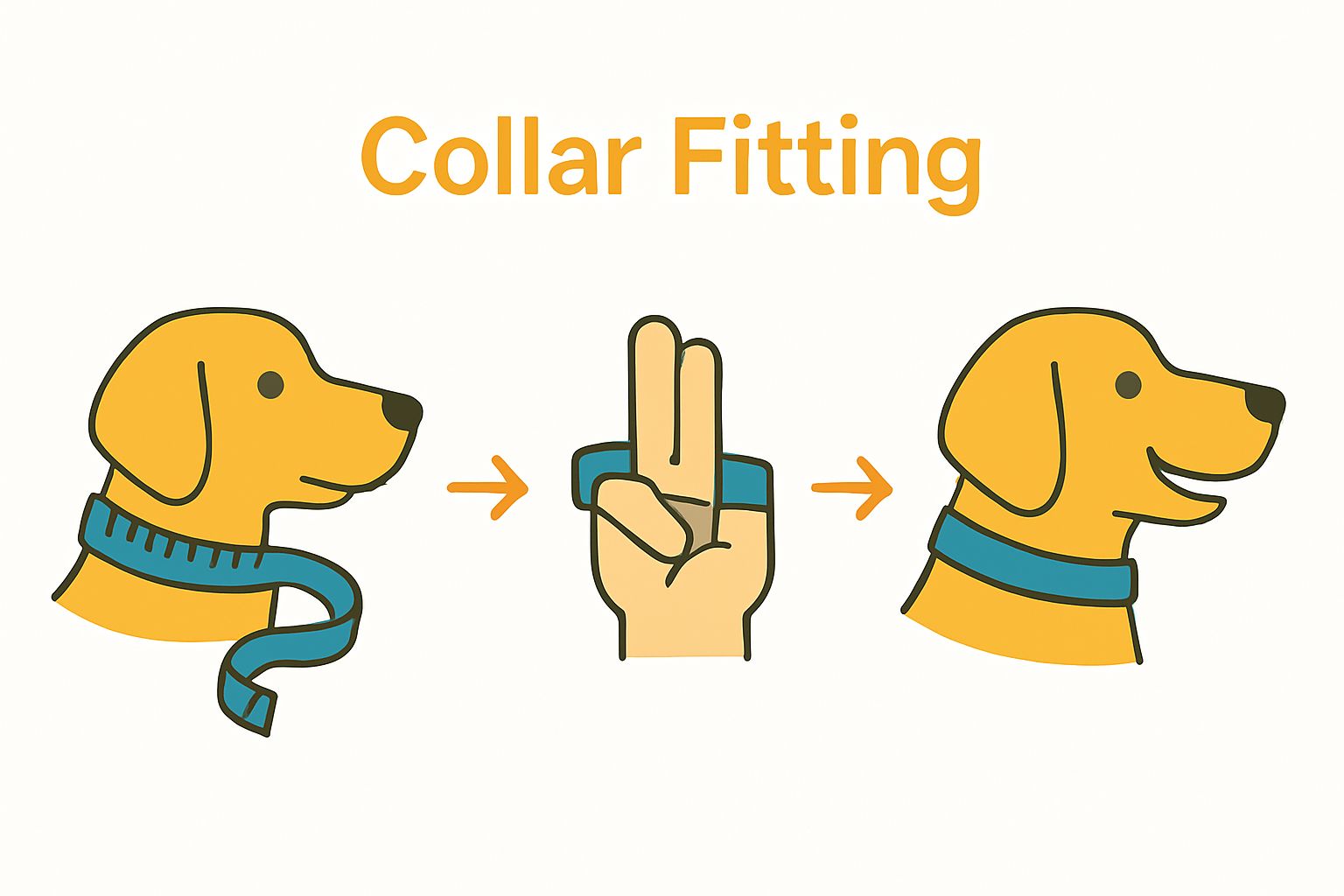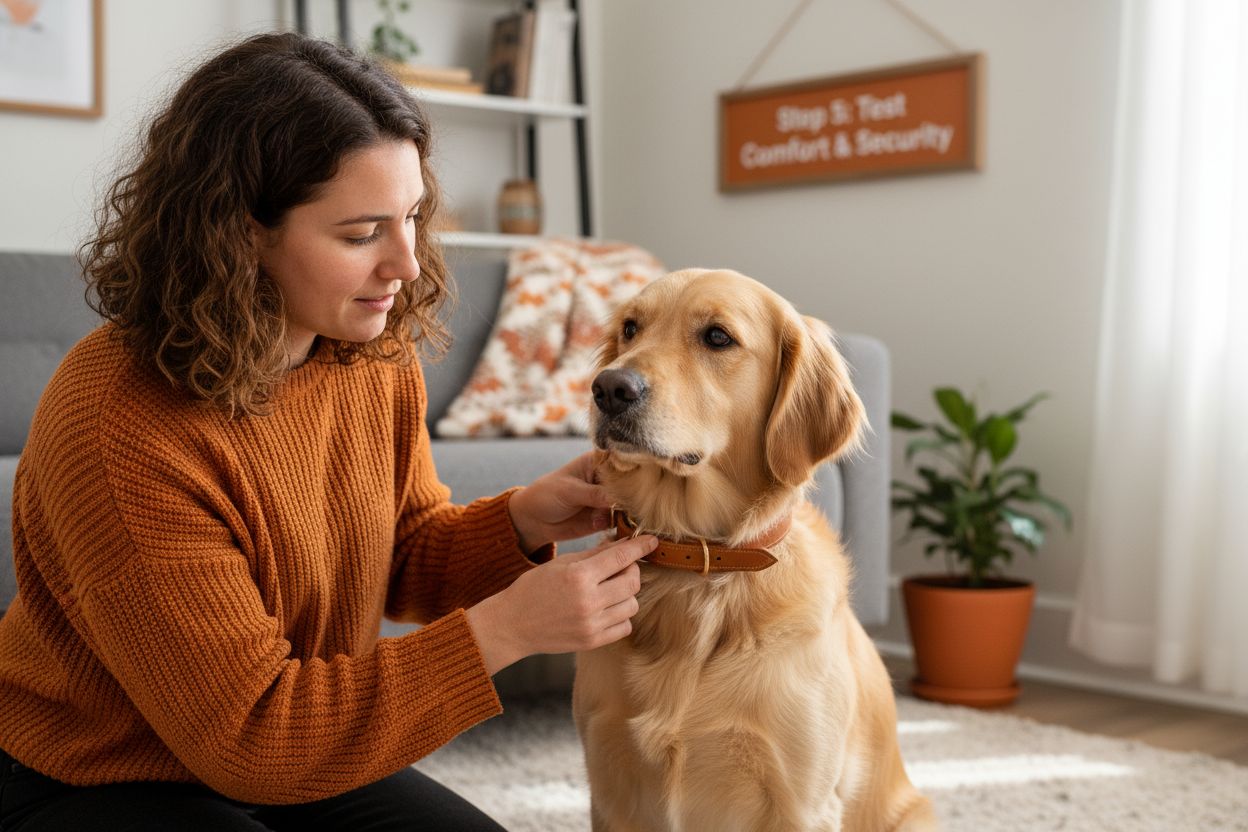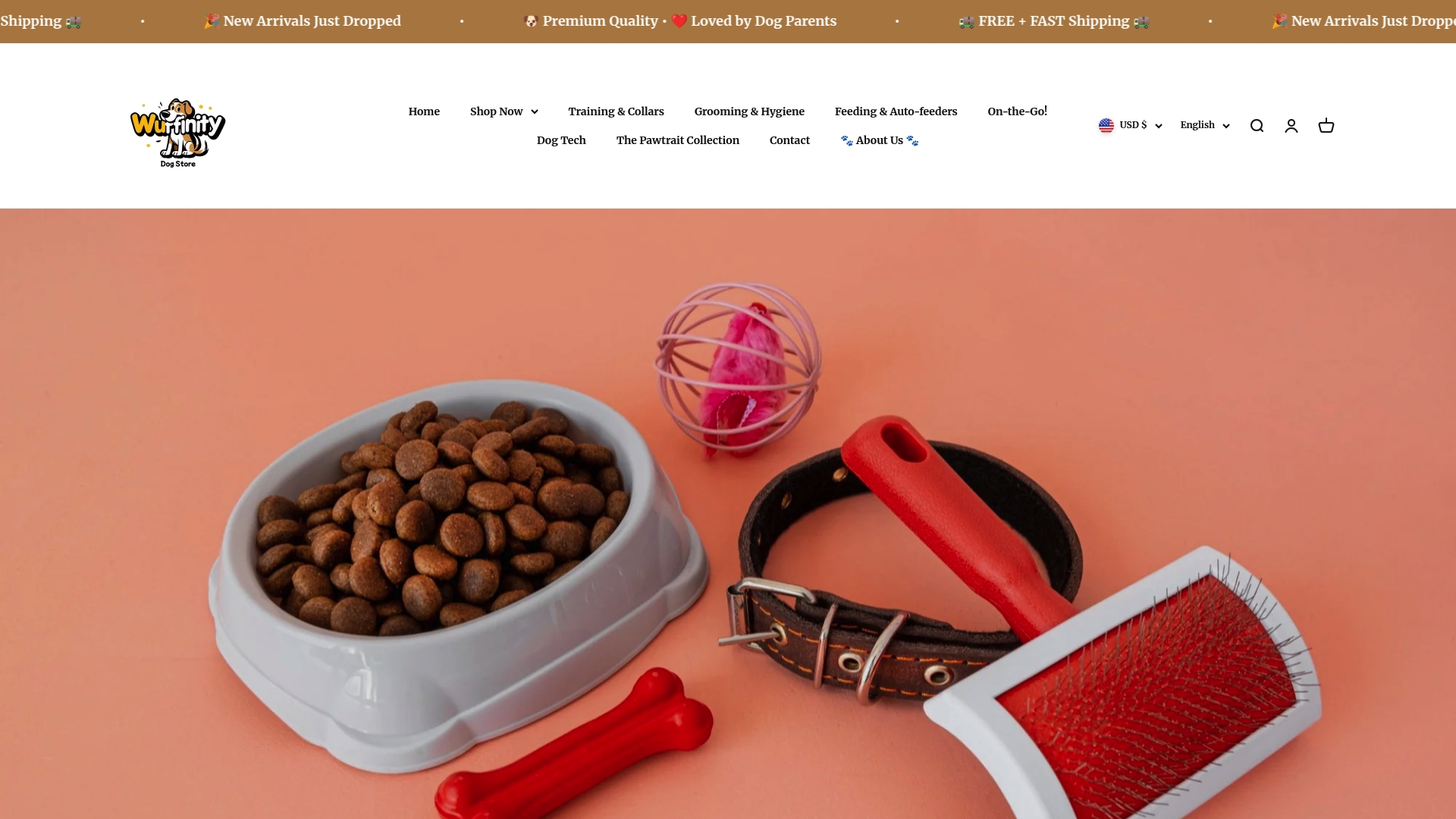Choosing a dog collar sounds simple and yet one wrong pick can mean discomfort or even safety risks for your best friend. Most people do not realize collars are not just about fashion a collar that fits poorly or uses the wrong material can actually harm your dog. Here is the surprising part. Measuring your dog’s neck with just two fingers of space is the golden rule that experts recommend for the safest fit and skipping this tiny detail leads to more escape attempts and injuries than most owners expect.
Table of Contents
- Step 1: Assess Your Dog’s Size And Breed
- Step 2: Determine The Right Material For Comfort
- Step 3: Choose The Correct Collar Type For Training
- Step 4: Measure Your Dog’s Neck For Proper Fit
- Step 5: Test The Collar For Comfort And Security
Quick Summary
| Key Point | Explanation |
|---|---|
| 1. Measure your dog’s neck accurately. | Ensure proper collar fit by measuring around the neck for comfort and security. Allow two fingers’ space to avoid tightness. |
| 2. Consider your dog’s breed and size. | Different breeds have unique neck shapes and fur types that affect collar choice, so tailor accordingly for safety. |
| 3. Choose the right material for comfort. | Select collar materials like nylon or leather based on your dog’s activity level and skin sensitivity to enhance comfort and durability. |
| 4. Test the collar for comfort and fit. | Observe your dog’s behavior while wearing the collar to ensure it does not irritate or restrict movement during activities. |
| 5. Select proper collar type for training. | Different training goals require specific collar types for effective learning; use standard or specialized collars depending on the training needs. |
Step 1: Assess Your Dog’s Size and Breed
Choosing the right dog collar begins with understanding your dog’s unique physical characteristics. Size and breed are critical factors that directly influence collar selection, ensuring comfort, safety, and proper fit. Precise measurement is key to finding a collar that not only looks great but supports your dog’s specific needs.
Start by gathering some essential information about your dog’s physical dimensions. Using a flexible measuring tape, measure the circumference of your dog’s neck where the collar would naturally sit. For accuracy, slide two fingers between the measuring tape and your dog’s neck this ensures the collar won’t be too tight. Smaller breeds like Chihuahuas or Yorkies will require significantly different collar dimensions compared to large breeds such as Great Danes or Saint Bernards.
Learn more about precise collar sizing can help you understand the nuances of fitting different dog breeds. Each breed has unique neck proportions and coat densities that impact collar selection. A Labrador Retriever with a thick neck will need a different approach compared to a slender Greyhound. Consider your dog’s growth stage too young puppies will rapidly outgrow their initial collar, so choose adjustable options that can accommodate their development.
Breed characteristics extend beyond simple neck measurements. Dogs with dense fur like Huskies or Samoyeds might require wider collars to distribute pressure evenly, while short-haired breeds can comfortably wear narrower designs. Active working dogs or those participating in specific activities might need specialized collars that provide additional support and durability.
Verify your collar choice meets these critical criteria:
- Fits comfortably with two fingers’ width of space
- Allows full range of neck movement
- Does not slide over the dog’s head when properly adjusted
- Matches the dog’s activity level and lifestyle
Remember that a well-chosen collar is more than just an accessory it’s a crucial piece of equipment that supports your dog’s safety and comfort during daily activities.
Step 2: Determine the Right Material for Comfort
After establishing your dog’s size and breed, selecting the appropriate collar material becomes the next crucial decision in your journey. Material selection dramatically impacts your dog’s comfort, durability, and overall wearing experience. Different materials offer unique benefits and challenges, making it essential to match the collar to your dog’s lifestyle and individual needs.
Nylon stands out as a versatile and popular collar material, offering lightweight flexibility and excellent durability. These collars are typically affordable, quick-drying, and available in numerous colors and patterns. For active dogs who enjoy outdoor adventures or frequently encounter water, nylon provides excellent resistance to moisture and maintains its structural integrity. Pet owners with dogs who have sensitive skin should look for soft, breathable nylon variations that minimize potential irritation.
Explore our guide on understanding dog collar types can provide additional insights into material nuances. Leather collars represent another premium option, particularly appealing for dogs with thicker fur or those requiring a more sophisticated aesthetic. Genuine leather develops a beautiful patina over time, becoming softer and more comfortable with extended wear. However, leather demands more maintenance compared to synthetic materials leather needs periodic conditioning to prevent cracking and maintain its suppleness.
Synthetic materials like biothane offer an innovative alternative combining the best attributes of traditional materials. These collars resist water, are easy to clean, and maintain their appearance longer than conventional options. For dogs with outdoor lifestyles or those living in humid environments, biothane provides exceptional durability without sacrificing comfort.
Consider these critical factors when evaluating collar materials:
- Durability and expected lifespan
- Maintenance requirements
- Your dog’s activity level
- Potential skin sensitivities
- Climate and environmental conditions
Ultimately, the perfect collar material balances functional performance with your dog’s individual comfort.
Below is a comparison of common dog collar materials, highlighting key features to help you choose the best one for your dog’s needs.
| Material | Comfort Level | Durability | Maintenance Required | Best For |
|---|---|---|---|---|
| Nylon | Soft, flexible | High (especially when wet) | Low | Active dogs, outdoor activities |
| Leather | Becomes softer over time | Very durable | Moderate (needs conditioning) | Dogs needing premium style or thicker fur |
| Biothane | Smooth, comfortable | Excellent (resists water) | Very low | Dogs in humid/wet environments |
| Observe how your dog responds to the new collar during initial wear. A well-chosen material will feel natural, cause no chafing, and support your companion’s daily activities without unnecessary discomfort. |
Step 3: Choose the Correct Collar Type for Training
Training collars represent a specialized category that goes beyond basic identification and walking needs. Different training objectives require specific collar designs that support your dog’s learning process while ensuring safety and comfort. Understanding the nuanced world of training collars can transform your approach to canine education.
Standard flat collars work well for basic obedience training and daily walks. These traditional collars provide a solid foundation for dogs learning fundamental commands and leash manners. However, more complex training scenarios might demand specialized tools. Martingale collars offer exceptional control for dogs with narrow heads like Greyhounds or Whippets, preventing escape while distributing pressure evenly and avoiding potential throat compression.
Learn more about understanding different dog training tools can provide deeper insights into matching collar types with training objectives. For dogs requiring more structured behavioral modification, head halters and training collars with additional features can be instrumental. These specialized designs help redirect pulling behaviors, manage reactivity, and support more advanced training techniques.
Electronic training collars should be approached with extreme caution and preferably under professional guidance. While some trainers use these for specific working dog scenarios, they require extensive knowledge and precise application to avoid causing psychological harm or creating negative associations with training. Positive reinforcement methods using reward-based techniques typically yield more consistent and compassionate results.
Consider these critical elements when selecting a training collar:
- Matches your specific training goals
- Fits comfortably without causing distress
- Supports your dog’s individual learning style
- Aligns with positive reinforcement principles
- Provides appropriate levels of control
Remember that no single collar works universally. The most effective training approach combines the right equipment with patience, consistency, and understanding of your dog’s unique personality and learning capabilities. Professional dog trainers can offer personalized guidance in selecting the most appropriate collar for your specific training objectives.
Step 4: Measure Your Dog’s Neck for Proper Fit
Accurate neck measurement is the cornerstone of selecting a comfortable and secure dog collar. This critical step ensures your dog’s safety and prevents potential discomfort or escape risks. Precision matters more than guesswork when determining the ideal collar size for your furry companion.
Begin by gathering a flexible measuring tape or a simple piece of string and a standard ruler. If using string, wrap it around your dog’s neck where the collar would naturally sit, then measure the string length against a ruler afterwards. Important: Always measure with your dog standing in a relaxed position to capture their true neck circumference. For the most accurate results, slide two fingers between the measuring tape and your dog’s neck this prevents the collar from being uncomfortably tight while ensuring it won’t slip off during activity.
Discover more about precise collar sizing techniques can help you refine your measurement approach. Different breeds and coat types can complicate the sizing process. Dogs with thick fur might require slightly larger measurements compared to short-haired breeds. Pay special attention to seasonal coat changes some dogs develop denser winter coats that can impact collar fit.
Measurement techniques vary slightly depending on your dog’s specific characteristics. Puppies present unique challenges since they grow rapidly. For young dogs, choose adjustable collars with multiple sizing options that can accommodate their developmental stages. Adult dogs with consistent neck sizes benefit from more precise sizing approaches. Consider measuring multiple times throughout the day, as neck circumference can subtly change with activity and posture.
Verify your measurement meets these critical criteria:
- Allows two fingers to slip comfortably between collar and neck
- Does not restrict breathing or movement
- Remains secure during various activities
- Provides room for growth in younger dogs
- Accommodates potential seasonal coat changes
Remember that manufacturers often provide specific sizing charts. Always cross-reference your manual measurements with these guidelines to ensure the most accurate fit. A well-fitted collar should feel comfortable for your dog while providing the security and control necessary for safe daily activities.
Use this checklist to verify that your selected collar meets all the necessary criteria for safety, comfort, and daily use.
| Criteria | Description |
|---|---|
| Two-finger space | Ensures the collar is not too tight or too loose |
| No restriction of breathing or movement | Dog can move and breathe comfortably |
| Secure during activity | Collar does not slip off during walks or play |
| Room for growth (for puppies) | Adjustable for growing dogs |
| Accommodates seasonal coat changes | Accounts for fluctuations in neck size due to fur |
| Follows manufacturer sizing guidelines | Matches collar size to provided charts |

Step 5: Test the Collar for Comfort and Security
Selecting the perfect collar is only half the journey ensuring your dog’s comfort and safety requires careful testing and observation. This crucial step transforms your collar selection from theoretical to practical, guaranteeing that your chosen accessory meets your dog’s unique needs.
Initiate the testing process by allowing your dog to wear the new collar in a controlled, comfortable environment. Observe their immediate reaction carefully some dogs might display initial discomfort through subtle body language like head shaking, excessive scratching, or attempting to remove the collar. A well-fitted collar should feel almost unnoticeable to your dog. Watch for signs of irritation or restricted movement that could indicate sizing or material issues.
Discover insights about ensuring your dog’s collar safety can provide additional guidance on proper collar assessment. Movement testing becomes critical during this stage. Encourage your dog to perform various activities walking, sitting, running, and playing to assess how the collar performs under different physical conditions. The collar should remain securely in place without sliding or causing chafing, while simultaneously allowing complete range of motion.
Consider the psychological aspects of collar wearing. Some dogs, particularly those with previous negative experiences, might require gradual introduction. Start with short wearing periods, using positive reinforcement like treats and praise to create a pleasant association. This approach helps transform collar wearing from a potentially stressful experience into a neutral or even enjoyable interaction.
Evaluate your collar using these critical verification criteria:
- Maintains consistent position during movement
- Allows full neck and head range of motion
- Produces no visible skin irritation
- Remains comfortable during extended wear
- Does not cause behavioral changes or stress
Remember that individual dogs react differently to collars. What works perfectly for one might cause discomfort for another. Patient, attentive observation coupled with a willingness to make adjustments ensures you find the ideal collar that keeps your dog safe, comfortable, and happy.
Here is a summary of key checks to perform when testing a new collar to ensure both comfort and safety for your dog.
| Check | What to Look For |
|---|---|
| Maintains position during movement | Stays in place when walking, sitting, or running |
| Allows full range of motion | Does not restrict neck or head movement |
| Does not cause skin irritation | No redness, chafing, or reactions under collar |
| Remains comfortable over time | Dog stays relaxed during extended wear |
| No negative behavioral changes | No excessive scratching, stress, or agitation |
 If persistent issues arise, do not hesitate to consult a professional dog trainer or veterinarian for personalized guidance.
If persistent issues arise, do not hesitate to consult a professional dog trainer or veterinarian for personalized guidance.
Find the Ideal Collar and Accessory Fit for Your Dog—Shop with Confidence at Wuffinity.store
Choosing the right dog collar means more than just picking a color or style. As highlighted in our step-by-step guide, measuring your dog’s neck correctly, understanding breed-specific needs, and selecting the best material are all crucial for a comfortable and secure fit. But even after following every expert tip, you may still feel uncertain about where to find collars, harnesses, and dog accessories that truly deliver on both quality and comfort.

Let Wuffinity.store take the stress out of your search for the perfect collar. On our main online shop, you’ll discover a curated assortment of collars, leashes, harnesses, and training tools tailored for all dog sizes and breeds. Our easy-to-navigate platform ensures you can quickly find product details and customer reviews, helping you choose with confidence. If you are looking to ensure safety and comfort, start browsing our quality selection of dog accessories today. Secure the right fit for your pup now—give them the comfort and protection they deserve with Wuffinity.store.
Frequently Asked Questions
How do I measure my dog’s neck for a collar?
Accurately measuring your dog’s neck is essential for a proper collar fit. Use a flexible measuring tape to measure around your dog’s neck where the collar will sit, ensuring to leave enough room for two fingers to slip between the tape and their neck for comfort.
What materials are recommended for dog collars?
Consider materials like nylon, leather, or biothane when selecting a dog collar. Each material has unique benefits, so choose based on your dog’s needs—nylon for durability, leather for aesthetics, or biothane for ease of cleaning.
How do I choose the right collar type for my dog’s training?
The collar type you choose should align with your training goals. For basic obedience, a flat collar works well, while trainers may utilize specialized options like martingale collars or head halters for specific behavior adjustments.
What should I look for when testing a new dog collar?
When testing a new collar, ensure it fits snugly without chafing and allows full range of motion for your dog. Observe your dog’s movement and comfort level during various activities like walking and running before finalizing your choice.
How can I determine if a collar fits my dog properly?
A properly fitted collar should allow two fingers to slide comfortably between the collar and your dog’s neck. Ensure it doesn’t restrict movement or breathing and remains secure without slipping off during activity.
Why should I consider my dog’s breed when selecting a collar?
Different breeds may require collars of varying widths and materials due to their size and coat type. Take into account your dog’s specific physical characteristics to ensure the collar provides both comfort and safety.






0 comentários